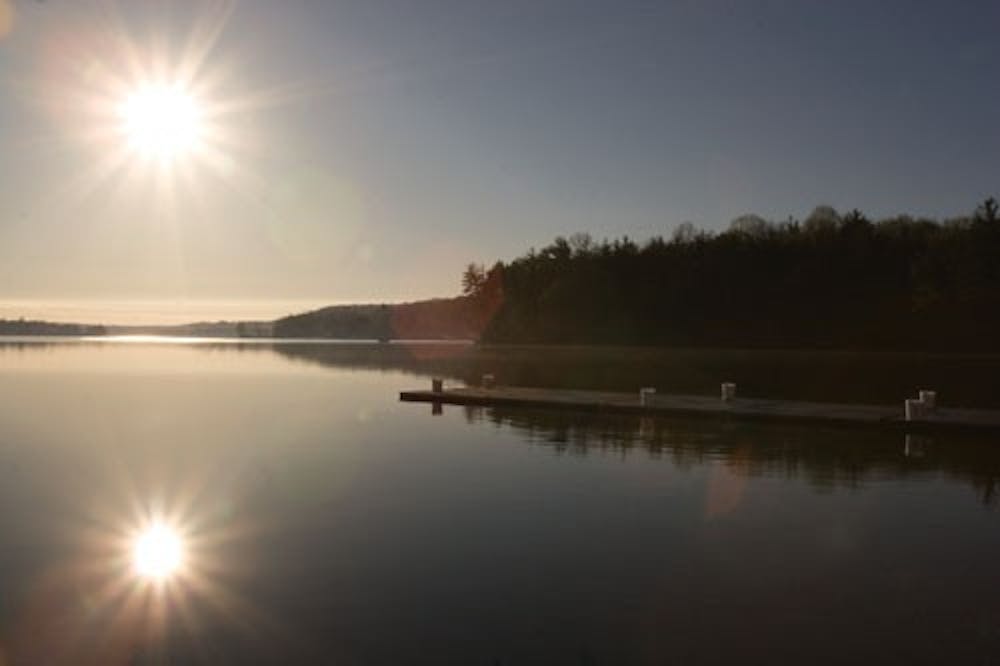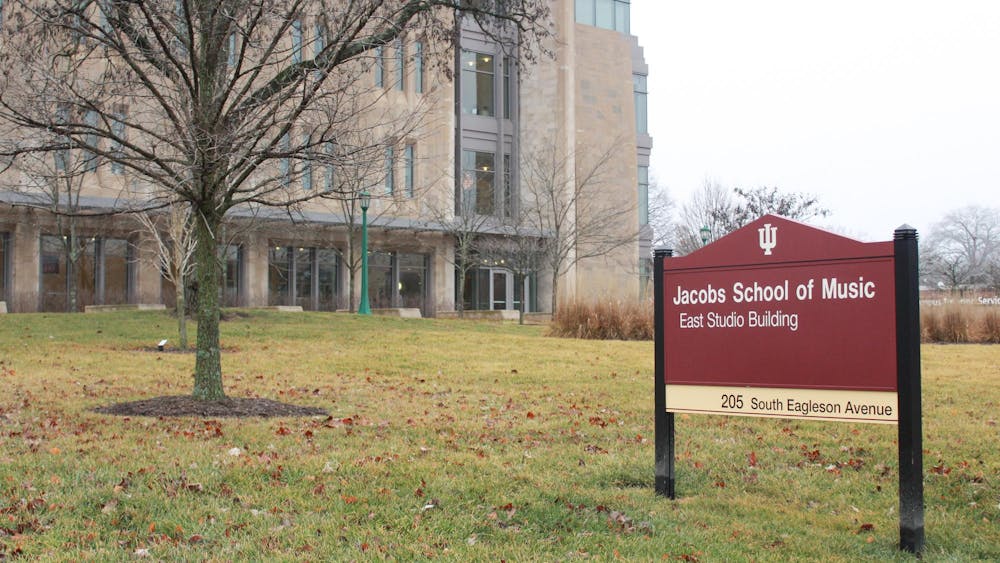The view from the dock of Lake Lemon Saturday afternoon showed a seemingly quintessential lake scene. Thirteen boats rested in the water, a few of their owners sitting atop them to scope out the fish beneath the brownish-blue surface. The bright yellow paddle held by a kayaker rose up and down in the distance as the small vessel glided through the water. Two Canadian geese floated lazily near the shore. \nOne aspect of the scene stood out, however. \nLying in the cove to the right of the dock sat a partially rusted barge. Though it appeared out of place in its surroundings, it will serve as a vital part of one of the Lake Lemon Conservancy District’s most recent projects: dredging. \nDredging, known in this case as the Sedimentation Removal Program, will dispose of silt that has built up in the lake through years of erosion. Bob Madden, manager of the Lake Lemon Conservancy District, said since the city of Bloomington built the lake in 1953, it has been filling with sediment and eventually reached a point where areas of the lake were \nunsafe for boating. \n“If there’s no effort to refill through dredging, the lake will ultimately fill in,” Madden said. \nNamed after former Bloomington mayor Tom Lemon, the lake originally served as a means of flood control, recreation and drinking water, according to the conservancy district’s Web site. At present, Lake Lemon is a backup water source for Bloomington. \nMadden said that the life expectancy of the lake, a man-made reservoir, is 120 years. If dredging the lake had not begun last year, said Marty Mann, chairman of the board of directors for the conservancy district, part of the lake would be unusable in 20 to 25 years. \n“It’ll open up boating channels for lake users, increase the life expectancy, and it will certainly have a profound effect on making the lake safer for boaters,” Madden said. \nThis April will mark the second year Lake Lemon has been dredged. Last year, costs totaled over $180,000 , or an average of $19 per cubic yard of material to be moved, said Madden. To fund the project, the conservancy district is paying through their operational budget and using a $300,000 grant from the Indiana Department of Natural Resources. The grant is being spread out from 2006 to 2008, after which the conservancy district’s board of directors will determine if the program will proceed any longer. While the dredging will benefit people who use the lake and the resources it provides, the conservancy also addressed its effect on wildlife in and around the lake. Lake Lemon is home to beavers, giant Canadian geese, muskrats and bald eagles, which are frequently spotted near the lake, according to the conservancy’s Web site. Bass, crappie and bluegill swim in its waters. \n“When we worked with the environmental agencies,” Mann said, referring to the Indiana Department of Environmental Management and the U.S. Army Corps of Engineers, “we stayed out of environmentally sensitive areas of the lake.” \nRoger Kugler, IU’s basic fishing techniques instructor, said he uses the lake approximately six times per year. He offered a different view of the dredging’s effect on fish in the lake. “I seriously doubt if the fish care all that much,” Kugler said. “I think it’s (for) humans that this will be beneficial.” \nAn off-road dump vehicle and an excavator mounted on a barge are the equipment being used for the project, Madden said. While the machines aren’t standard parts of the lake environment when dredging is not occurring, they do not impact the use of the lake. \n“(The dredging has) not affected boaters at all,” Madden said. “It’s a free-floating barge so people can get around it.” \nAlthough changes such as a larger boating area can been seen now, Mann said a lot of the benefits to the dredging will come down the road. He said that overall, the dredging is for long-term maintenance. \n“The dredging is more like cleaning teeth as opposed to putting a crown in,” Mann said. “This is something that we’re going to do forever.”
Spring cleaning: Lake Lemon being dredged this month

Get stories like this in your inbox
Subscribe





